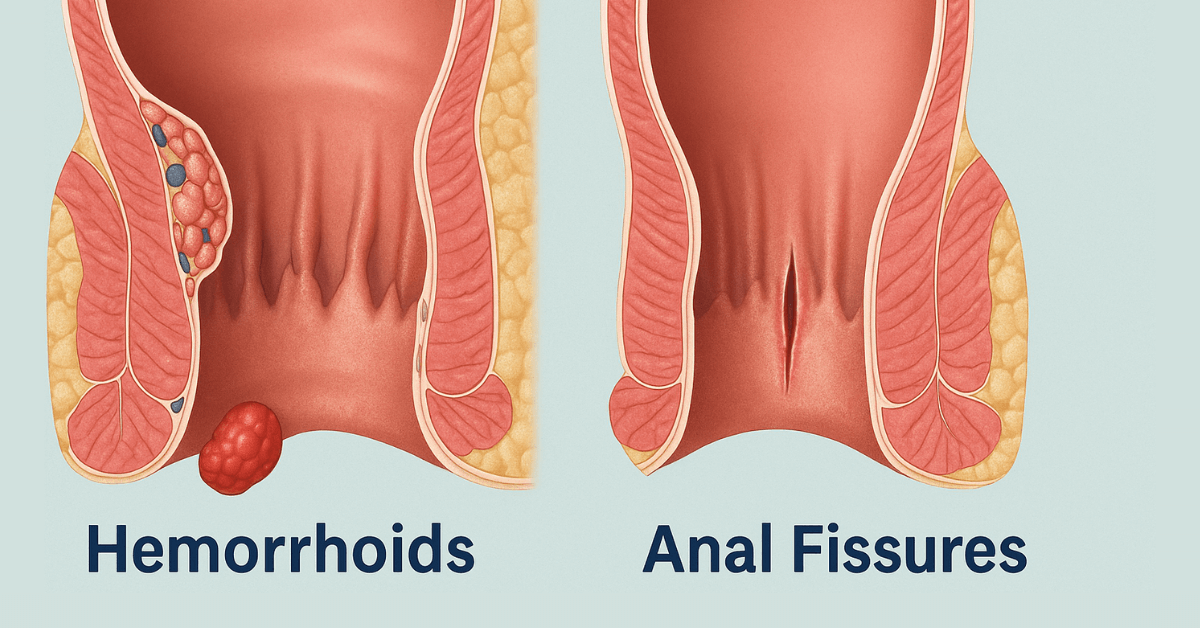Pilonidal cysts are a common but often painful condition that affects the area near the tailbone. They form when hair and debris become trapped under the skin, causing infection and inflammation. Though they may seem like a minor issue, if left untreated or improperly cared for, pilonidal cysts can lead to recurring infections, abscesses, and other complications. One of the most effective ways to manage and prevent the recurrence of pilonidal cysts is through maintaining proper hygiene. In this blog, we’ll explore how diligent hygiene practices can prevent the formation of pilonidal cysts and ensure that any existing cysts don’t come back.
Understanding Pilonidal Cysts
A pilonidal cyst is a small sac or abscess that forms in the skin at the top of the crease of the buttocks. It often contains hair, dirt, and dead skin cells. The condition is more common in young adults, particularly men, and those with a sedentary lifestyle or excess body hair. When the cyst becomes infected, it can cause significant pain, redness, and swelling. In severe cases, surgery may be required to remove the cyst and repair the surrounding skin.
While pilonidal cysts can be triggered by a variety of factors such as genetics, obesity, or prolonged sitting, one of the most significant contributors to their recurrence is poor hygiene. Bacteria, dirt, sweat, and dead skin cells can accumulate in the area, leading to infection. The good news is that with proper hygiene and self-care, pilonidal cysts can be prevented, and any recurrence can be minimized.
Pilonidal Cysts and Hygiene: Preventing Recurrence
Proper hygiene is the first and most crucial step in preventing pilonidal cyst recurrence. The area around the tailbone is naturally prone to sweat and oil buildup, and without adequate care, it becomes an ideal environment for bacteria and hair follicles to become trapped. By focusing on regular cleaning, hair removal, and skin care, individuals can keep the area free from irritants that might trigger cyst formation.
Key Hygiene Practices to Prevent Recurrence of Pilonidal Cysts
Keep the Area Clean and Dry
One of the most important things you can do to prevent pilonidal cysts from recurring is to keep the area clean and dry. Sweat, moisture, and bacteria thrive in damp environments, so it’s vital to wash the area daily. Use a mild, fragrance-free soap and lukewarm water to cleanse the region, making sure to rinse thoroughly. Avoid harsh soaps or scrubbing, as these can irritate the skin and make the cysts more prone to infection.
After cleaning, gently pat the area dry with a clean towel or allow it to air dry. Do not rub the skin, as this could cause friction that irritates the cyst. If the area remains damp or moist, bacteria can multiply, increasing the likelihood of recurrence.
Shaving and Hair Removal
Excess hair around the area can act as a trap for bacteria, dirt, and sweat. One of the best preventive measures for pilonidal cysts is to keep the area free from hair. Regular hair removal prevents hair from becoming embedded in the skin, a condition that can cause cysts to form. There are several hair removal options, including shaving, waxing, or laser hair removal.
While shaving is a common method, it requires consistent upkeep and care. When shaving, use a fresh razor and shaving cream to minimize the risk of irritation or cuts. Be careful not to shave too closely, as this can cause ingrown hairs, which can lead to further cyst formation. If you’re unsure about the best method for hair removal, consult a dermatologist or healthcare professional for personalized advice.
Regular Examinations
A crucial step in managing pilonidal cysts is early detection. Regularly examining the area around the tailbone can help you identify any changes or signs of infection. Look for redness, swelling, or drainage, which are signs that a cyst may be developing. If you notice any of these symptoms, it’s important to consult a healthcare provider immediately.
Early intervention can prevent the cyst from worsening and reduce the need for more invasive treatments, such as surgery. Additionally, if you’ve had pilonidal cysts in the past, regular self-checks can help detect any recurrence at the earliest stages.
Wear Loose-Fitting Clothing
Tight clothing, especially tight underwear or pants, can create friction and pressure on the area, which may irritate the skin and exacerbate pilonidal cysts. To reduce the risk of recurrence, wear loose-fitting clothes that allow the skin to breathe. Opt for breathable fabrics like cotton that don’t trap moisture and sweat against the skin.
Additionally, try to avoid sitting for long periods without moving. If your job or lifestyle requires you to be seated for extended periods, take regular breaks to stand up, stretch, and walk around. This helps to relieve pressure on the tailbone area and promote blood flow to the region.
Manage Sweat and Moisture
Excessive sweating, especially in hot and humid conditions, can increase the risk of developing pilonidal cysts. Sweat can mix with bacteria and debris, creating a breeding ground for infection. It’s important to wear moisture-wicking clothing, especially if you’re physically active. After sweating, it’s essential to shower and change into clean, dry clothes as soon as possible.
If you’re prone to sweating in the area, consider using an anti-chafing or antibacterial powder. These products can help absorb excess moisture and reduce friction. However, make sure to use products that are safe for sensitive skin and avoid those with harsh chemicals that could irritate the area.
Pilonidal Cysts and Hygiene: Post-Surgery Care
If you’ve had surgery to remove a pilonidal cyst, maintaining proper hygiene during the recovery period is even more critical to prevent recurrence. After surgery, the area will be tender and may have stitches or open wounds. Follow your healthcare provider’s instructions carefully on how to care for the incision sites and prevent infection.
Follow Wound Care Instructions
After pilonidal cyst removal surgery, it’s essential to follow proper wound care instructions provided by your doctor. This usually includes cleaning the wound regularly with antiseptic solutions, avoiding excessive moisture, and keeping the area dry and free from irritants. Avoid sitting for long periods on hard surfaces, as this can put pressure on the healing wound and potentially lead to complications.
Gentle Cleaning and Avoiding Irritation
For the first few weeks after surgery, use gentle, fragrance-free cleansers and avoid scrubbing the area. Instead, clean the area with a damp cloth or sterile gauze pad. Pat the area dry with a clean towel to avoid further irritation. You may also need to avoid activities such as swimming or vigorous exercise until the wound has fully healed.
Watch for infection symptoms of pilonidal cysts
Even with proper hygiene, infection can still occur after surgery. Be vigilant for signs of infection, including increased pain, redness, warmth, or drainage from the wound. If you notice any of these symptoms, contact your healthcare provider right away.
Pilonidal Cysts and Hygiene: Maintaining Long-Term Care for Prevention
Preventing pilonidal cyst recurrence is a long-term commitment to hygiene. While the steps outlined above can significantly reduce the likelihood of cyst formation, consistency is key. Establish a routine that includes daily cleansing, regular hair removal, and wearing loose clothing. Regular check-ups with your healthcare provider and self-examinations can also help you catch any potential issues early.
By following a consistent hygiene routine, you can significantly reduce the risk of pilonidal cysts recurring. In addition, adopting a healthy lifestyle that includes proper nutrition, regular exercise, and weight management can contribute to overall skin health and minimize the likelihood of cyst development.

Conclusion
Pilonidal cysts can be a painful and disruptive condition, but with proper hygiene, their recurrence can often be prevented. By keeping the area clean, dry, and free of excess hair, individuals can significantly reduce the risk of developing pilonidal cysts or experiencing a recurrence after treatment. Post-surgery care and attention to detail in personal hygiene are also essential in ensuring that the cyst doesn’t return.
If you’ve experienced pilonidal cysts, make sure to incorporate these hygiene habits into your daily routine and book an appointment with us for personalized advice. With the right care, you can keep pilonidal cysts at bay and enjoy a more comfortable, pain-free life.



